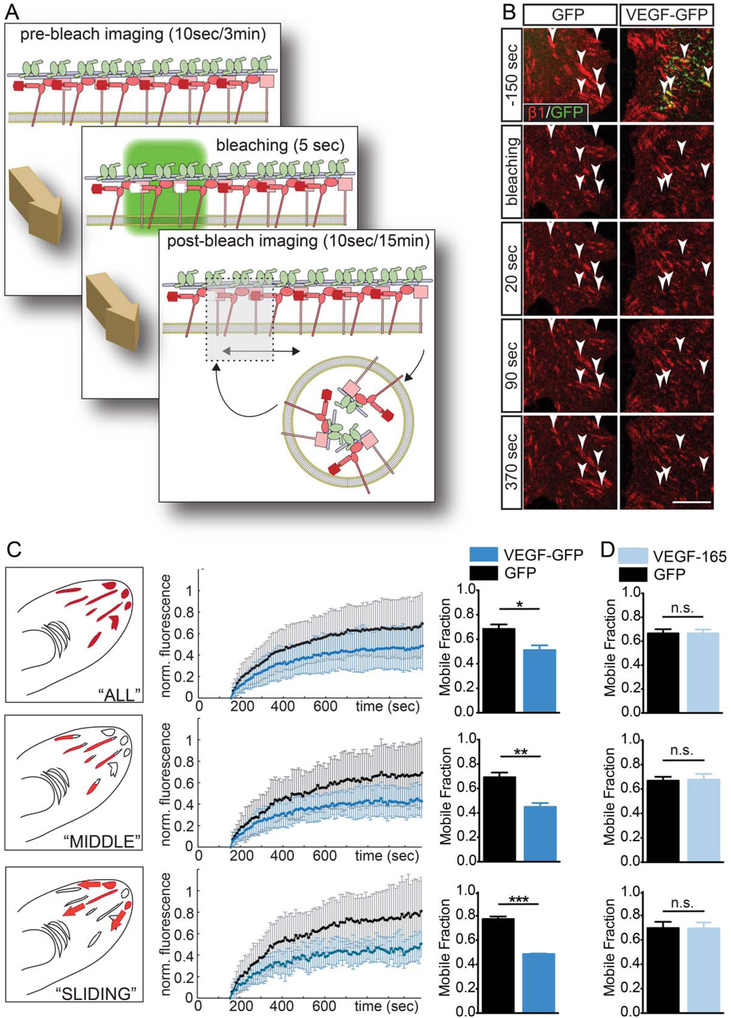FIGURE 6:
Surface-bound VEGF decreases β1 integrin turnover in an autocrine manner. A: Schematic overview of FRAP experiments. B: Sequential confocal images from FRAP videos on astrocytes coexpressing β1-SNAP/GFP or VEGF-GFP (Movie 6) demonstrate a weaker integrin recovery in VEGF-loaded adhesions (right column) than in control adhesions (left column). Arrowheads point to bleached areas. Bar: 10 μm. C: Average fractional fluorescence recovery curves and corresponding MFs of “ALL” reliably fitted adhesions show that VEGF significantly tempers integrin turnover. Selecting for “MIDDLE” adhesions (axial ratio >5, distance from cell border >3 μm, front part excluded), or “SLIDING” adhesions (inward extension during experiment) shortened error bars (SD), and differences between MFs became more significant, suggesting that VEGF stabilizes integrins specifically in these mature or maturing cell-matrix adhesions. (n = 4 for “ALL” and “MIDDLE,” 3 for “SLIDING,” control and experimental adhesions: 82, 96; 25, 23; 28, 14; resp.; columns: mean ± SEM; unpaired t test, * P<0.05, ** P<0.01, *** P<0.001). D: When FRAP data from control cells before and after addition of VEGF-165 (200 ng/ml) was compared, no difference was observed between mean MFs, suggesting that cellular secretion confers an autocrine effect on adhesions to VEGF. N = 3, control and experimental adhesions: 155, 230; 111, 174; 56, 28; respectively; paired t test; n.s., nonsignificant.

